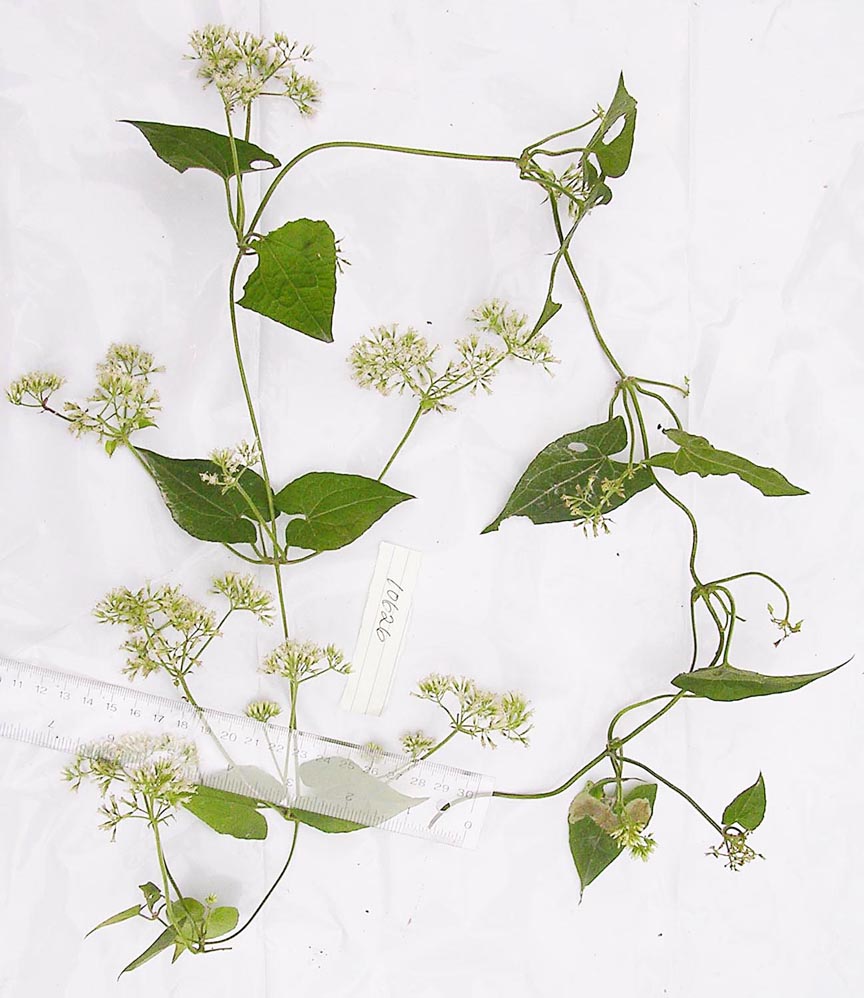Mikania
|
Family: Asteraceae |
Vines (perennial, sometimes suffrutescent) [non-viney perennials, shrubs], to 300[-1500+] cm. Stems usually twining to scrambling (terete, striate, or [4-] 6-angled, sometimes winged), branched. Leaves cauline; opposite [whorled]; petiolate [sessile]; blades palmately 3[-7]-nerved [pinnately nerved], ± ovate or deltate-ovate to triangular [linear], margins entire or undulate to dentate or toothed to lobed, faces glabrous or puberulent to tomentose, often gland-dotted. Heads discoid, in corymbiform [paniculiform, racemiform, spiciform, thyrsiform] arrays. Involucres ± cylindric, [1-]2-3[-4] mm diam. (usually each subtended by 1 bractlet). Phyllaries persistent, 4 in ± 2 series (outer pair imbricate over inner pair), not notably nerved, lanceolate, linear, or oblong (bases often swollen), ± equal. Receptacles flat (glabrous), epaleate. Florets 4; corollas usually white, sometimes pink to rose or purplish, throats funnelform or campanulate, lobes 5, linear or triangular to deltate; styles: bases slightly, if at all, enlarged, glabrous, branches ± filiform [weakly clavate]. Cypselae ± prismatic, [4-]5[-10]-ribbed, glabrous or puberulent, sometimes gland-dotted; pappi persistent, of [20-]30-60 (white, buff, pinkish, or purplish) barbellulate to barbellate bristles in 1-2 series (distinct or basally connate). x = 16-20. All species of Mikania in the flora belong to M. sect. Mikania in the sense of W. C. Holmes (1996).
Heads discoid, the fls 4, all tubular and perfect; invol narrow, of 4 principal bracts and occasionally a few short outer ones; receptacle small, naked; cor white to pink or ochroleucous; style branches papillate, elongate, linear, acutish, with short ventromarginal stigmatic lines near the base; achenes 5- angled; pappus a single series of numerous capillary bristles, usually connate at base; mostly perennial twining vines, with opposite, simple, usually petiolate lvs and numerous small heads. 200+, mainly trop. Amer. Gleason, Henry A. & Cronquist, Arthur J. 1991. Manual of vascular plants of northeastern United States and adjacent Canada. lxxv + 910 pp. ©The New York Botanical Garden. All rights reserved. Used by permission. |

